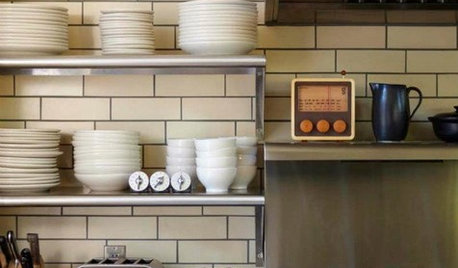The importance of straining sediments from juices??
ellen_inmo
11 years ago
Related Stories

PRODUCT PICKSGuest Picks: An Arsenal of Tools for Healthy Eating
Make cooking and juicing easier whether you follow a vegetarian, vegan, Paleo, primal or other diet
Full Story
KITCHEN DESIGNCreate Your Own Checklist for a Well-Stocked Kitchen
Personalize the kitchen with your own must-haves from our list of top cooking tools, small appliances, pots, pans and more
Full Story
Houzz Gifts: 31 Finds for the Chef Who Has Everything
Delight serious cooks with the latest in kitchen gadgets, accessories, cookware and small appliances from Houzz
Full Story
Video Gift Guide: 43 Finds for a Festive Home Bar
Shake up a party-ready bar with gleaming accents, dashes of red and enough glasses for every lord a-leaping
Full Story
KITCHEN DESIGNSimple Pleasures: Wake Up and Smell the Coffee
Slugging down any old sludge while pulling on socks is no way to start the day. Learn to brew amazing java and savor the experience here
Full Story
LANDSCAPE DESIGNErosion Control for Your Seaside Garden
Learn how to protect the soil and plants on your shoreline for a beach landscape that lasts
Full Story
EDIBLE GARDENSHow to Grow Your Own Cocktail Garden
Conceivably, anything edible could find its way into a cocktail. Why not make the route rather short?
Full Story
EDIBLE GARDENSWhy Grow Quince? For Beauty, Fragrance and Old-Time Flavor
Delightfully perfumed fruit and lovely spring blossoms make this apple and pear cousin worth a spot in the garden
Full Story
KITCHEN SINKSEverything You Need to Know About Farmhouse Sinks
They’re charming, homey, durable, elegant, functional and nostalgic. Those are just a few of the reasons they’re so popular
Full Story
GREAT HOME PROJECTS25 Great Home Projects and What They Cost
Get the closet of your dreams, add a secret doorway and more. Learn the ins and outs of projects that will make your home better
Full Story





Linda_Lou
GeneTheNewGuy
Related Professionals
Walnut Landscape Architects & Landscape Designers · Brooklyn Park Landscape Contractors · Cockeysville Landscape Contractors · El Mirage Landscape Contractors · Essex Landscape Contractors · Suitland Landscape Contractors · Vancouver Landscape Contractors · Raytown Landscape Contractors · Bixby Roofing & Gutters · Clarksville Roofing & Gutters · Maplewood Roofing & Gutters · Colonia Roofing & Gutters · Beaumont Driveway Installation & Maintenance · Gurnee Driveway Installation & Maintenance · New Bedford Driveway Installation & Maintenanceellen_inmoOriginal Author
GeneTheNewGuy
readinglady
digdirt2
planatus